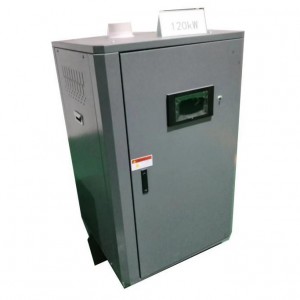- Afrikaans
- Albanian
- Amharic
- Arabic
- Armenian
- Azerbaijani
- Basque
- Belarusian
- Bengali
- Bosnian
- Bulgarian
- Catalan
- Cebuano
- China
- China (Taiwan)
- Corsican
- Croatian
- Czech
- Danish
- Dutch
- English
- Esperanto
- Estonian
- Finnish
- French
- Frisian
- Galician
- Georgian
- German
- Greek
- Gujarati
- Haitian Creole
- hausa
- hawaiian
- Hebrew
- Hindi
- Miao
- Hungarian
- Icelandic
- igbo
- Indonesian
- irish
- Italian
- Japanese
- Javanese
- Kannada
- kazakh
- Khmer
- Rwandese
- Korean
- Kurdish
- Kyrgyz
- Lao
- Latin
- Latvian
- Lithuanian
- Luxembourgish
- Macedonian
- Malgashi
- Malay
- Malayalam
- Maltese
- Maori
- Marathi
- Mongolian
- Myanmar
- Nepali
- Norwegian
- Norwegian
- Occitan
- Pashto
- Persian
- Polish
- Portuguese
- Punjabi
- Romanian
- Russian
- Samoan
- Scottish Gaelic
- Serbian
- Sesotho
- Shona
- Sindhi
- Sinhala
- Slovak
- Slovenian
- Somali
- Spanish
- Sundanese
- Swahili
- Swedish
- Tagalog
- Tajik
- Tamil
- Tatar
- Telugu
- Thai
- Turkish
- Turkmen
- Ukrainian
- Urdu
- Uighur
- Uzbek
- Vietnamese
- Welsh
- Bantu
- Yiddish
- Yoruba
- Zulu
Дек . 05, 2024 07:48 Back to list
Design and Analysis of Multiple Pipe Heat Exchanger Systems for Enhanced Thermal Efficiency
Multiple Pipe Heat Exchangers An Overview
Heat exchangers are essential in various industrial processes, enabling the efficient transfer of thermal energy between two or more fluids. Among the various designs available, multiple pipe heat exchangers have garnered attention for their effectiveness in specific applications. Understanding their structure, operation, and advantages can simplify the decision-making process for engineers and facility managers seeking optimal heat exchange solutions.
Structure and Design
A multiple pipe heat exchanger consists of several pipes, each serving as a conduit for the hot or cold fluid. The design typically features an outer shell that encases an inner bundle of pipes. The heating or cooling fluid circulates through the inner pipes while the secondary fluid flows around them in the outer shell. This arrangement allows for a large surface area for heat transfer while maintaining a compact design.
The configuration of the pipes can vary; some designs incorporate parallel arrangements while others may use a coiled structure. The choice of pipe arrangement significantly influences the efficiency and effectiveness of the heat exchanger. Additionally, multiple pipe heat exchangers can be constructed from various materials, including stainless steel, copper, and carbon steel, depending on the application and fluid characteristics.
Operation
The operation of a multiple pipe heat exchanger is based on the principle of thermodynamics, where heat flows from a hotter fluid to a cooler one until thermal equilibrium is reached. The fluids are typically separated by the pipe walls, preventing direct mixing while allowing heat transfer. The effectiveness of the heat exchanger depends on factors like temperature difference, flow rates, and the specific heat capacities of the fluids involved.
In a typical application, one fluid enters the inner pipes at a high temperature (hot fluid), while the cooler fluid enters the outer chamber. As the hot fluid moves through the inner pipes, it transfers heat to the surrounding fluid, thereby cooling down. The outer fluid, in turn, absorbs this heat, raising its own temperature. The design may incorporate counterflow or parallel flow arrangements, where counterflow configurations often yield a higher efficiency due to the maintained temperature differential along the entire length of the exchanger.
multiple pipe heat exchanger

Advantages
Multiple pipe heat exchangers offer several advantages. First, their design allows for a larger surface area relative to their volume, improving heat transfer efficiency. This feature is especially beneficial in applications where space constraints are a concern. Second, the modular nature of the design makes maintenance and cleaning more convenient, ensuring prolonged operational efficiency.
Furthermore, they can be designed to handle a wide range of flow rates and thermal loads, making them versatile for various applications, including power generation, chemical processing, and HVAC systems. Their ability to operate under different temperature and pressure conditions also adds to their appeal, making them suitable for both high and low-temperature processes.
Applications
Multiple pipe heat exchangers find use in several industries. In chemical processing, they can be used for heat recovery and refrigeration processes. In HVAC systems, they serve crucial roles in heating water for building spaces and meeting hot water demands. Additionally, in power generation, these exchangers are employed in cooling systems where maintaining optimal operating temperatures is critical for efficiency and performance.
Conclusion
In conclusion, multiple pipe heat exchangers represent a robust solution for efficient heat transfer in various industrial applications. Their design flexibility, operational efficiency, and ease of maintenance make them an attractive choice for engineers and facility operators. As industries continue to seek more efficient energy use and waste heat recovery solutions, the importance of effective heat exchangers, including multiple pipe designs, cannot be overstated. Understanding their features and applications will ensure that industries can harness their advantages effectively.
-
8mm Thin-Walled Cast Steel Manhole Cover Pallet Bottom Ring | Durable
NewsAug.04,2025
-
Premium Cast Iron Water Main Pipe: Durable, Corrosion-Resistant
NewsAug.03,2025
-
Durable Cast Iron Water Mains | AI-Optimized Systems
NewsAug.02,2025
-
High-Efficiency Propane Boiler for Baseboard Heat | Save Energy
NewsAug.01,2025
-
Premium Source Suppliers for Various Gray Iron Castings
NewsJul.31,2025
-
Durable Cast Iron Water Main Pipes | Long-Lasting
NewsJul.31,2025


